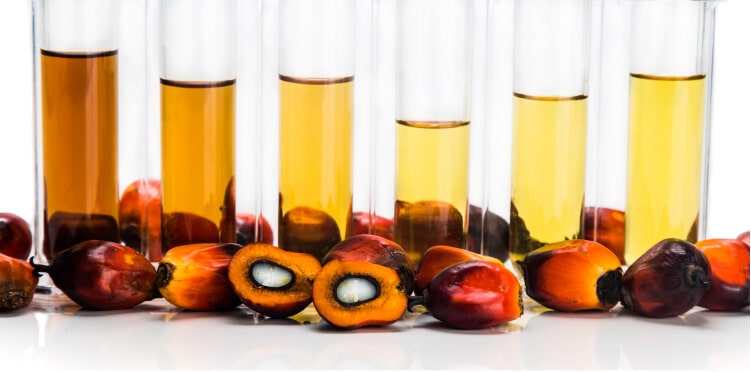Hyundai Motorstudio Senayan Park
Hyundai Motorstudio Senayan Park
Newsroom
-
Biodiesel Raw Material and How to Process It
- Hyundai Motorstudio Senayan Park 2022.08.18
-
Biodiesel is considered as the most widely adopted alternative fuel because it is eco-friendly. It is able to reduce emissions, and the raw materials are easily available.
Biodiesel is a type of renewable energy source because it is produced from biomass. In general, any organic material can be used as raw material for biodiesel. Technology continues to develop, and now waste can be used as an alternative raw material.
However, the majority of biodiesel is a mixture of 20% biodiesel and 80% mineral diesel. The question is, what are the raw materials for biodiesel and how is it made?
Biodiesel Raw Material
Organic materials in any form such as grass, leaves, wood, animals, and plantation waste can be used as raw materials for biodiesel, including solid waste, although it is still under development. The following are commonly biodiesel raw materials:
1. Used Cooking Oil
Besides being widely used for animal feed, used cooking oil can be used as raw material for biodiesel. However, the process of collecting used cooking oil presents its own challenges. Most used cooking oil usually comes from big cities because they have many restaurants.
Used cooking oil is considered the best raw material for biodiesel, but the supply is limited. For now, the availability of used cooking oil is more limited than petroleum, although they are both running low.
2. Animal Fat
Animal fats such as fish oil, yellow oil, and other fats can be used as biodiesel which is often referred to as biomass. Especially for fish, its fish oil and fish waste can be used as raw material.
The choice of biomass as a feedstock will depend on its availability, as well as the processing facilities and its selling price. Production costs also have an important role in biodiesel production.
3. Algae
Algal oil, the liquid extracted from algae plants, can be used as a raw material for biodiesel. This can be a solution for areas that are experienced by algae blooms.
Especially for aquatic microalgae, this species is considered better because it has a higher efficiency in photosynthesis and grows in a wet environment that provides a lot of water, carbon, and nutrients.
4. Vegetable Oil
There are advantages and disadvantages of using vegetable oil. The advantages are obvious because vegetable oil is easy to obtain, low in sulfur, easy to decompose, and has a higher heat content.
The disadvantages of vegetable oils are they have a higher viscosity (10-20 times thicker), low volatility, high cost, reactive to unsaturated hydrocarbons, and are better for consumption.
However, vegetable oils that cannot be consumed, such as castor oil, are now widely used as one of the raw materials for biodiesel.
5. Plants
Various plants such as sunflower, soybean, oil palm, rapeseed, cottonseed, peanut, canola, corn, jojoba, and rice are able to provide the chemical elements for biodiesel. However, only a few raw materials have been used commercially, the rest are still in the development stage.
Because it is a food, its use for raw material must be considered, economically and environmentally. In particular, the benefits of plants for consumption are far greater than as raw materials for biodiesel.
6. Alcohol and Methanol
Alcohol and methanol are the most used elements for biodiesel because they are easy, inexpensive, and available in large quantities. Higher alcohols such as ethanol, isopropanol, and butanol are also used.
Alcohol will produce methyl or ethyl and isopropyl or butyl esters after a transesterification reaction occurs. This reaction occurs due to the presence of an acid catalyst in the form of sodium hydroxide.
How to Make Biodiesel?
The majority of biodiesel is made by transesterification of an acid catalyst such as potassium or sodium hydroxide with methanol to produce a short-term reaction. The alcohol ratio is an important variable that can affect the quality of biodiesel, while temperature has a significant effect on the reaction.
It is important that the raw materials and alcohol used are free of water and fatty acids. The presence of humidity and fatty acids triggers the appearance of foam when an alkaline catalyst is applied, thereby reducing the quality of biodiesel.
An additional step is required as the preparation of the raw material, by removing the water and fatty acids.
Used cooking oil or animal fat contains high levels of free fatty acids and water can trigger foam. In addition, used cooking oil has other contents such as polymers formed during the frying process.
That is why, the raw material preparation process must be carried out to remove the remaining water and fatty acid content. In used cooking oil, it usually begins with purification.
The transesterification reaction produces glycerin. For every 1 ton of biodiesel produced, 100 kg of glycerin is produced at the same time. The majority of biodiesel is produced using vegetable oil because it has low pressure and temperature with a conversion rate of up to 98%.
The composition used is 87% vegetable oil, 1% sodium hydroxide catalyst, and 12% methanol. Besides using an acid catalyst and an alkali catalyst, biodiesel can be produced using heterogeneous catalysts, microwave or ultrasound techniques.




